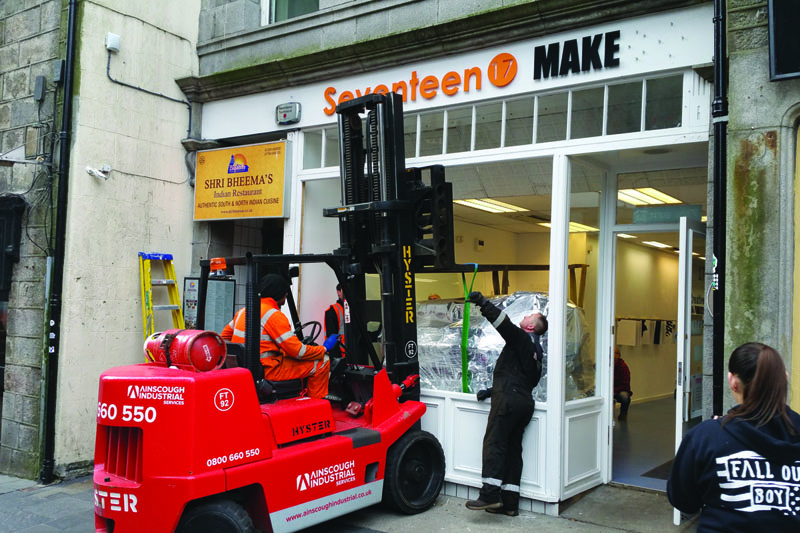A small ‘fablab’ in Scotland - Make Aberdeen - has installed a Jetrix KX3 large-format printer that the public and SME’s can use for short runs. Here’s how it works.
Make Aberdeen isn’t a print business. It isn’t a ‘business’ as such at all. It’s an initiative that was set up by Aberdeen Council in 2014 following the ‘fablab’ concept that was started in the US by the Massachusetts Institute of Technology with a grant from the National Science Foundation. In essence, it is one of over 700 ‘fablabs’ worldwide that provide a digital fabrication studio for anyone who wants to use it.
Run by Robert Gordon University (RGU) since it took over tenure in 2015 - supported by the council, Creative Scotland and the UK Government Super Connected Cities programme - Make Aberdeen’s main use is additive manufacturing, more commonly known as 3D printing. But now wide-format print is on its list of offerings to anyone who buys membership to the project - and that can be for as little as £15 for a day. It means that those who want to investigate what they can do with large-format inkjet print can do so with hardly any outlay.
Industrial product designer Ben Durack runs the studio, and says: “I want to get people excited. The whole focus is for the studio to be an incubator for people’s ideas. We have all the equipment that you would ever need to test out an idea or even to start a small business. The technology is accessible and people can now get a production ready design in a fraction of the time and for a fraction of the cost. You don’t even need design teams any more - you can take it on yourself. A few years ago this was unthinkable.”
Individuals and SME’s use the Make Aberdeen facilities, as do students. For the most part, the studio organises training days so that people can use its technology themselves, but Durack says that with the Jetrix things will be a bit different. “I’ll be the person actual doing the hands-on running of the machine, and there are a couple of people at RGU that have been trained by InkTec, who delivered it, too. But those wanting to use it will more than likely be present so they see what it can do.” Added to that, a series of workshops on large-format print will take place in 2017.
The person responsible for taking the Jetrix route is RGU’s chief technological officer Phil Chaplain, who says he plumped for this particular model because it suits the environment and size of the space available in Make Aberdeen’s city centre location - though a 2 x 3m pane of glass had to be removed from the front of the building to get the 1,220 x 1,220mm flatbed machine in place!
A simple user interface was an attraction as was the fact that it can handle two/three layer printing plus spot UV varnishing. And of course it can print edge-to-edge prints on a diverse range of media including glass, metal, plastic, wood, fabric, cardboard, ceramic etc.
“Make Aberdeen offers us an opportunity to collaborate with private individuals, north-east businesses and organisations that have a great idea or small business they want to develop,” says Chaplain. “We are keen to break down any community barriers and offer this environment to a wide audience.”
The Jetrix now sits alongside the 3D printing kit run by the initiative, plus its laser cutting and other fabrication equipment and bank of iMacs that can be hired too.
“People should feel free to use our studio for whatever their project is. When people are working alongside each other in that way and start a conversation, that leads to collaboration and then that is when you start to see the really innovative stuff start to happen.”


